Orchid plants are delicate flowers native to tropical regions in Asia and Australia. They are also some of the oldest and largest flowering plants on earth. But, because they are sensitive to light, they require special care. Moreover, you need a lighting system that meets their requirements to grow them properly. Stay with us as we uncover this topic in greater depth in this best lighting for orchids guide.
Factors that Determine the Orchids’ Flowering
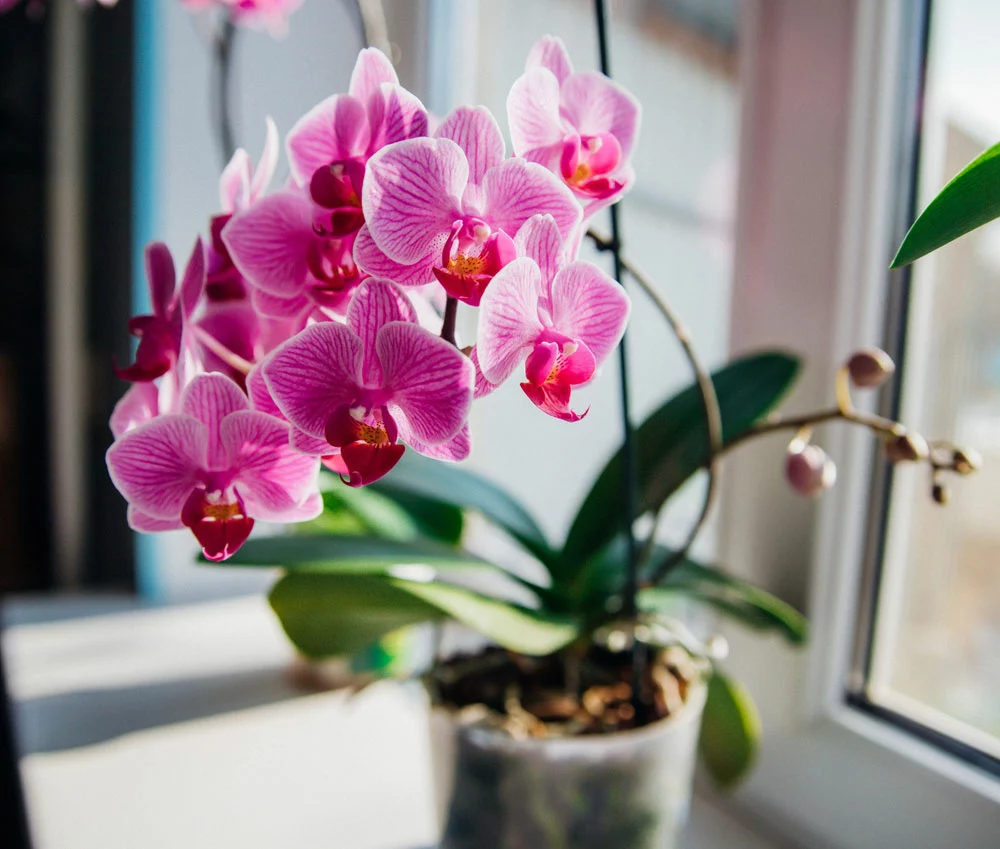
Pink flower and leaves of the phalaenopsis orchid in a flower pot.
Flowering is made possible by the right lighting (either artificial or from direct sunlight) conditions. So you need to understand three aspects of light while lighting your orchids.
Light Intensity

Indoor pink flower Orchid
The orchid cannot create blooms if the light levels are low. On the contrary, too much light will cause the leaves to have sunburns and appear unattractive.
In addition, they also have less surface area available for photosynthesis.
Therefore, the light intensity must be optimal for the orchid to utilize natural sunlight in plant food formation.
You may try the following things to make the intensity of light just right:
Locate the Proper Location

Tendering an orchid
First, if the intention is to plant an orchid on a windowsill, an east-facing window is typically preferred as it’ll often receive plenty of light. On the other hand, windows facing North need more intensity, while windows facing west might have too much.
But you can also use a thin curtain to reduce the afternoon light that enters through west-facing sunny windows.
Measure the Light
There are four distinct methods for doing this, and we’ll look at them at length.
Light meter: A light meter is the most precise method of measuring light. You can download the light meter on your phone or use a camera.
Light Meter App: These applications may be cost-effective or free.
Hand Method: The hand approach is another option; while it’s less precise, it’s still useful and doesn’t need any special equipment. Place your hand 8–10″ from a white sheet of paper in the desired location to measure the light intensity with your hand,
Foliage: Orchid leaves should often be light green rather than dark green. Additionally, stretched, extended orchids require more light.
Duration of Light
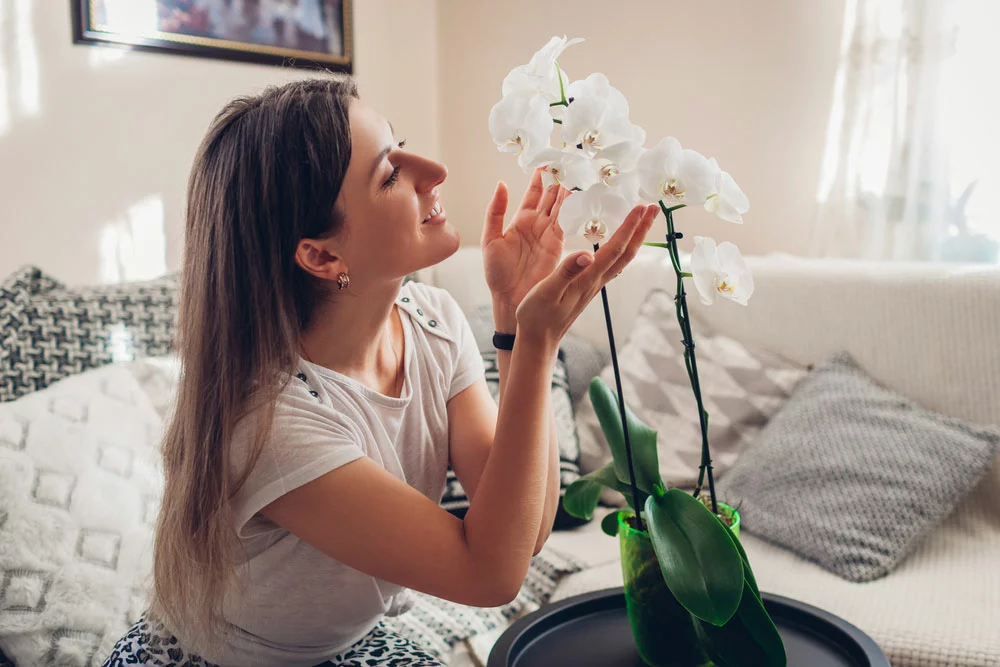
Woman smelling orchid in a pot.
The light duration for a plant gives the timeframe or the light photoperiod. Notably, seasonal variations will affect how long the days are. Also, the closer you are to the equator, the more the day length is constant.
However, the season significantly impacts the light duration the farther you are from the equator. It implies that we must plant our orchids in an area where they will experience a regular day and night cycle.
Quality of Light
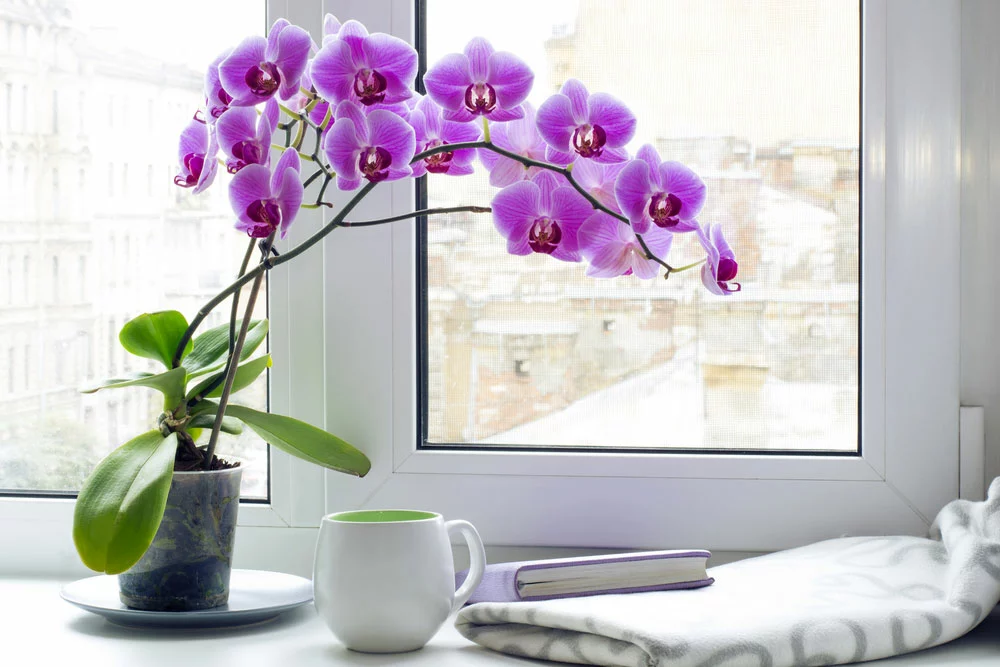
An orchid on the window sill.
Ideally, growing orchids out in the open or in a greenhouse is the best idea, as they’ll have access to full-spectrum light.
But, if you grow plants near a window sill or under controlled light conditions in the house, you must check the quality of light. Notably, some windows block UV light. Moreover, some artificial lights will not provide the requisite blend of light wavelengths.
Thus, red light is ideal for your orchids to flower. On the other hand, blue light is essential for plants’ overall growth. Therefore, LED and fluorescent lights provide a complete spectrum for orchid growth.
Reasons Why You Should Use Artificial Light for Indoor Growing
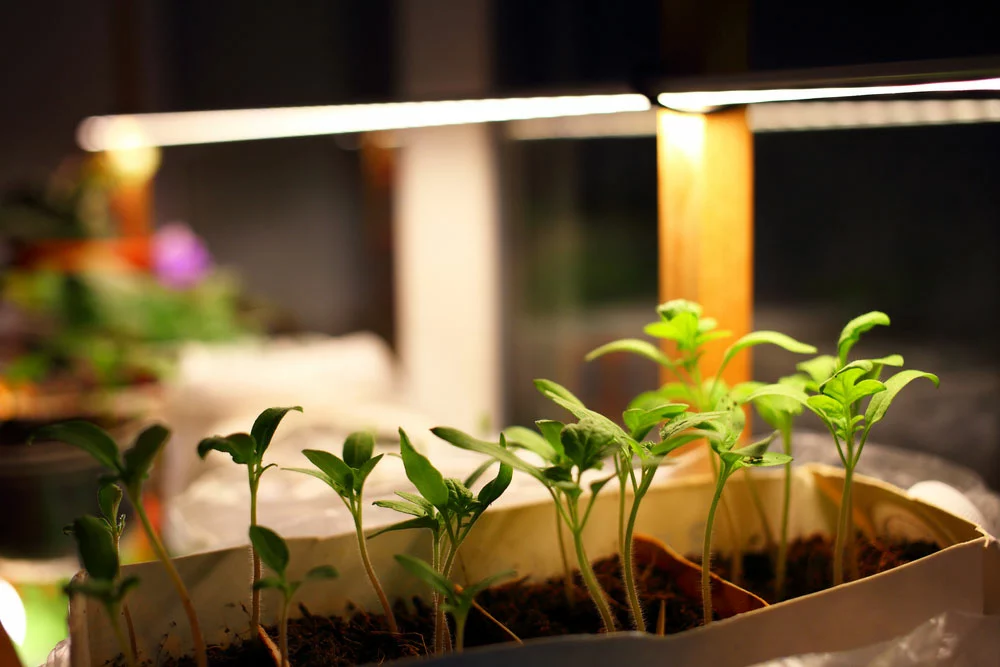
Growing seedlings under artificial lights.
Here are some reasons why you should use artificial lighting for orchids indoors:
- Proper lighting grows light system makes it easier for your orchid plant to blossom.
- Also, both fluorescent bulbs and LED grow lights are affordable and widely accessible.
- The summer may bring a lot of heat and excessive light for windowsill gardeners. Thus, it is simpler to control the light intensity when you grow the orchids under lights.
- Besides, a grow light system is ideal for orchids’ flowering. It also assists in leaf and root formation and the plant’s overall growth.
- More orchids can grow more easily with artificial light, including Dendrobiums and small Cattleyas, which thrive in this light.
Lighting for Orchids: Fluorescent Lights vs. LED Lights
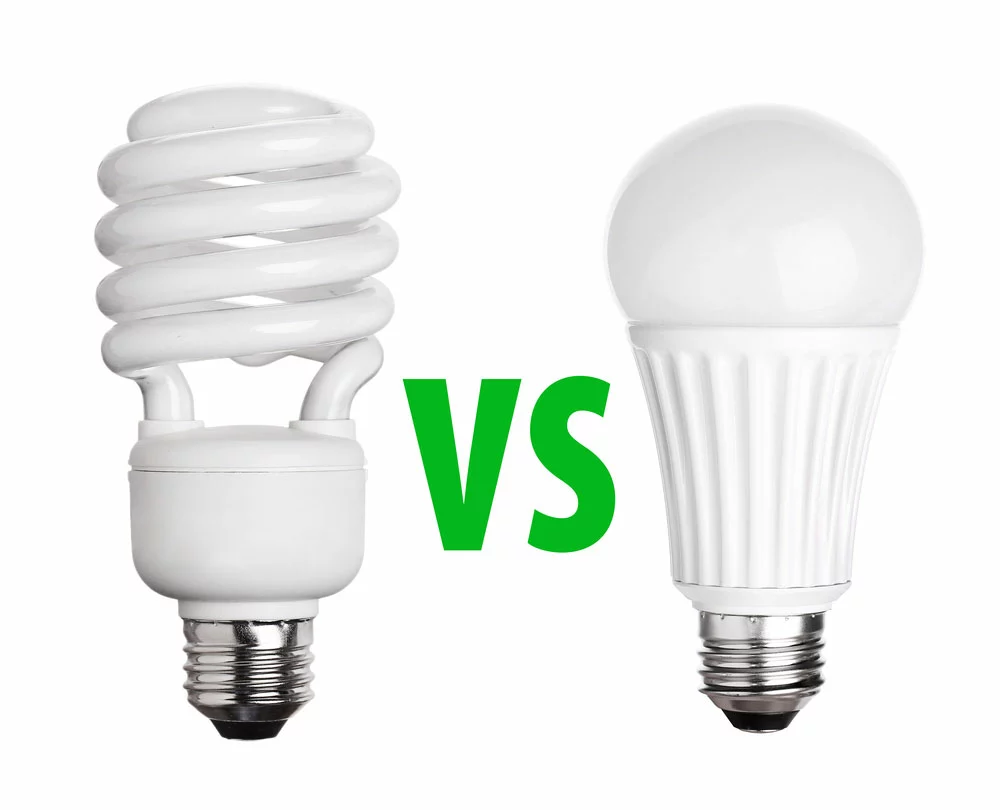
CFL Fluorescent and LED Light Bulbs.
Let’s have a look at these artificial lights separately:
Lighting for Orchids: LED Lights
When buying LED light fixtures for orchids lighting, go for a full spectrum LED light bulb. Such a bulb has all the light wavelengths that plants need for their growth.
Moreover, selecting a LED light for indoor plants will give your orchids a complete spectrum of light. For instance, your orchids benefit from LED lights made for hydroponic systems.
Lighting for Orchids: Fluorescent Lights
Three criteria to consider when purchasing fluorescent bulbs:
- Aim for bulbs with a color temperature between 5000 and 6500 K.
- Also, ensure that the Color Rendering Index (CRI) is in the 90s but no lower than 85.
- The bulb’s efficiency increases with the higher the number of lumen output. Pick a bulb with the most lumens per watt.
Why Artificial Lights Work
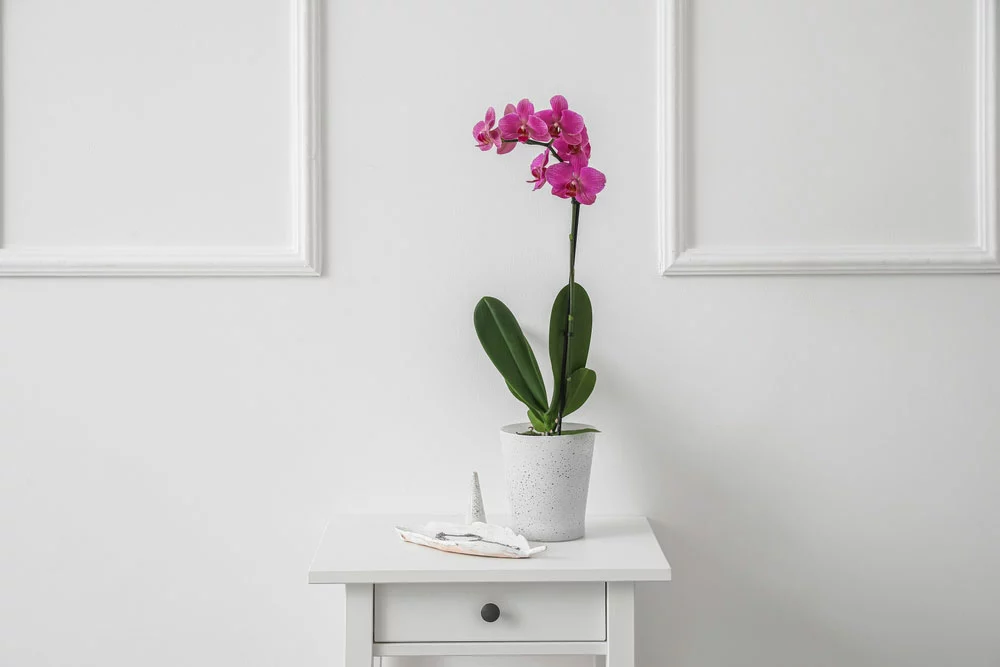
Beautiful orchid flower
Some of the reasons why these artificial lights work include the following:
- Artificial lights (including fluorescent lamps and LEDs) don’t expose the orchids to sunburn as they have an even light diffusion.
- Also, full-spectrum fluorescent bulbs and LED lights may give the specific colors that orchids require to bloom and flourish. Orchids require this type of light to thrive.
What Orchids Thrive Under Artificial Lighting?
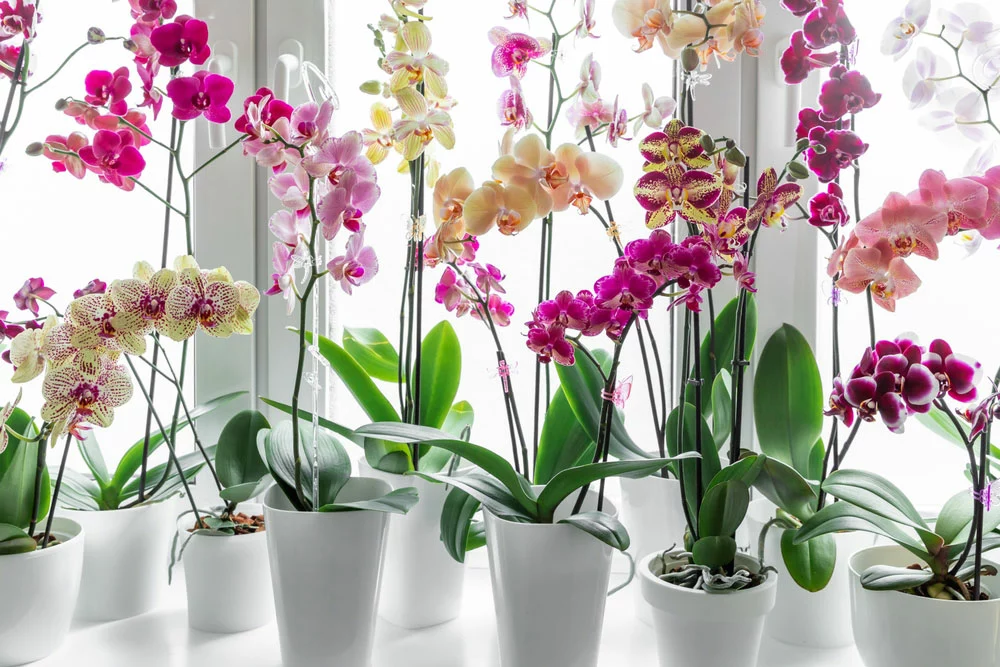
Colorful orchids phalaenopsis.
You should grow compact orchids under 12 inches under lights like the Paphiopedilum and Phalaenopsis. Also, it would help if you considered growing orchids with low to moderate light needs.
Furthermore, it would help if you placed your Cattleya in the center of the tube and your Phalaenopsis on each end. It is because the middle of the fluorescent tube has the brightest light.
How to Increase the Lighting for Orchids
You can do a few other things to give your orchids light apart from placing them in the appropriate area and giving artificial light as needed. They include:
- Rotate the plants close to a light source. All plants (including orchids) will grow toward the light. It is essential if the window serving as the orchid’s light source allows light to enter the space from one side. You may, for example, rotate a phalaenopsis orchid to encourage the flowering stem to develop more uprightly.
- Also, you can use mirrors: Placing mirrors in front of a window or light source will increase the light by two times. Also, remember to fix the mirror’s angle to avoid burning the orchid.
How to Determine Whether Orchid Has the Right Lighting
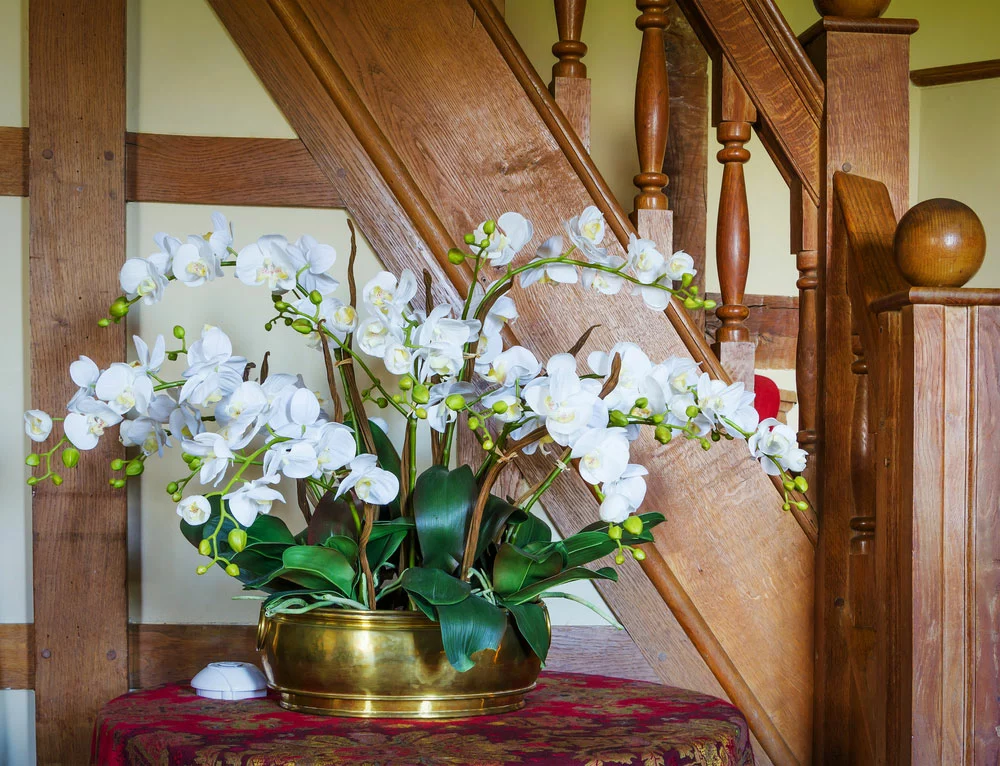
Orchids in an indoor space.
There are two reliable ways to determine if your orchids are receiving enough light.
- Most orchids feature small, straight, solid leaves when they receive the right light. Besides, it should also be pale green, But you can still find orchid varieties with long and thin leaves, so beware of this exception.
- Remember to check out the orchids’ blooms as well. It takes a lot of energy to bloom from receiving adequate light.
Are My Orchids Receiving Too Much Light?
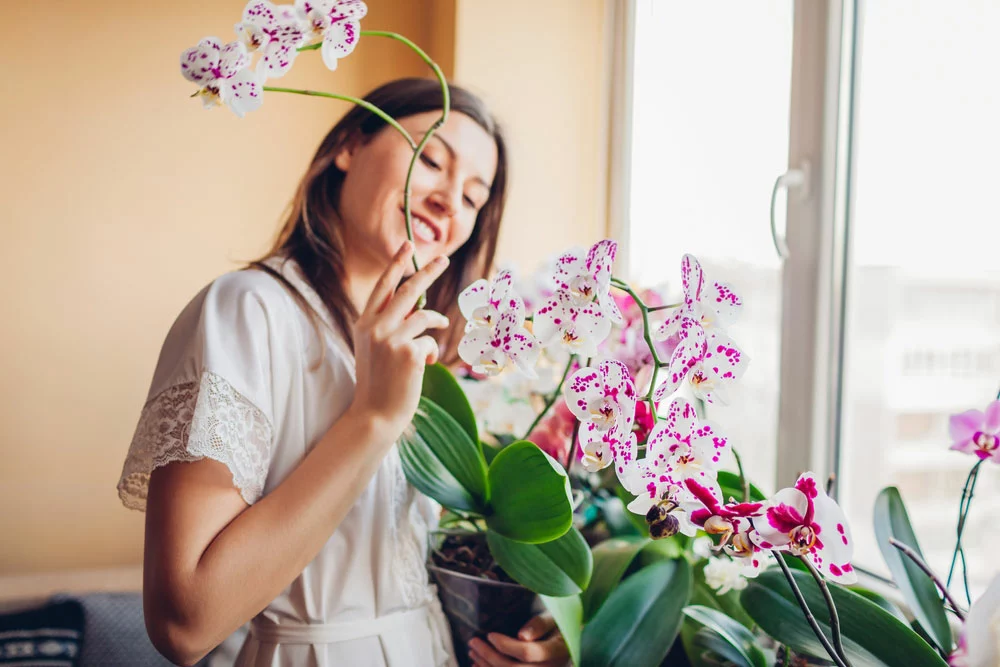
Blooming white phalaenopsis orchid.
Here is a simple observation measure to know if orchids are receiving too much light:
- Bright green is the perfect color for orchid leaves. Hence, yellow leaves may be an indication of much light.
- Additionally, it would be best if you looked for sunburns. The effect of an orchid’s sunburn is a noticeable black patch with a yellow ring around it.
Summary
Notably, the lighting requirements described in this guide are crucial to watch out for in determining the best lighting for orchids. Also, we hope this guide gives you a detailed understanding of orchid lighting needs and requirements for the best growth.
